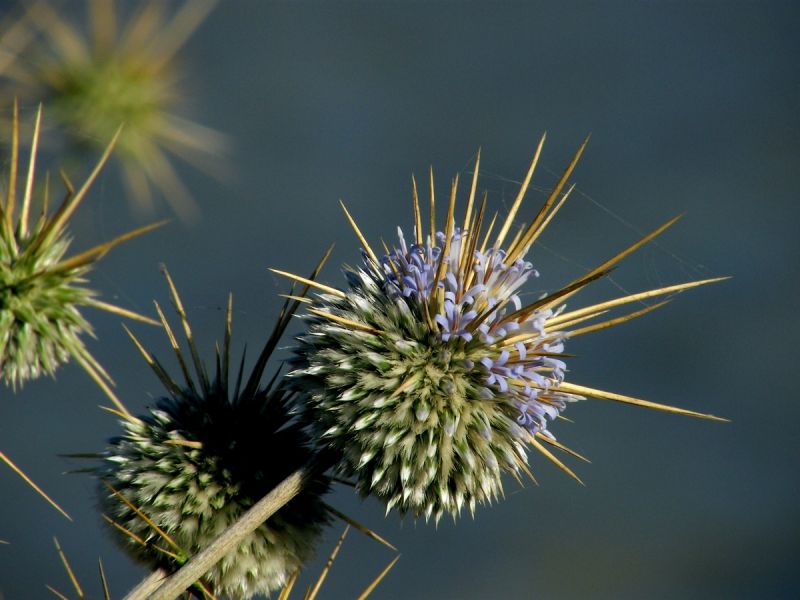| PlantID | 0080 |
| Botanical Name | Echinops echinatus |
| Common Name | Unt-Kantalo |
| Classification | | Kingdom: | Plantae | | Subkingdom: | Tracheobionta | | Division: | Magnoliophyta | | Class: | Magnoliopsida | | Subclass: | Asteridae | | Order: | Asterales | | Family: | Asteraceae | | Genus: | Echinops | | Species: | echinatus |
|
| Part used | Seeds, roots, whole plant. |
| Medicinal Properties | Seeds: cooling and aphrodisiac. Roots: abortifacient and aphrodisiac. Whole plant: antipyretic and analgesic. |
| Medicinal Use | Whole plant: useful in cough and cold(extract), strangury, biliousness, urinary discharges, thirst, chronic fever, pain in joints, inflammation, increases appetite, stimulates the liver, brain diseases and ophthalmia. |
| Chemistry | Apigenin-7-O-glucoside, echinacin, echinaticin, echinozolinone. Root: allophanic acid. Flowers: beta-amyrin and its acetate, lupeol and its acetate, beta-sitosterol, palmitic acid, betulinic acid, luteolin, quercetin and echinopsine. |
| Cultivation | NA |
| Regional Habitat | A very common weed of waste places, open grounds and along road sides. Distribution: Churu, barmer, jodhpur, bikaner, pali, dungarpur, tonk, jaipur, bharatpur, banswara and jhalawar districts. |
| Description | Erect, 50-90 cm in height. Stem: stout, sulcate, white-cottony pubescent, woody at base. Leaves: sessile, lamina amplexicaul at base, oblong-lanceolate, pinnatisect, surfaces white cottony wooly abaxially, veins raised abaxially, spiny adaxially, lobes triangular, spinescent/spines 1.0-2.0 cm long and pale-yellow. Flowers: capitula 2.0-4.5 cm across, globose, stalk 1.0-2.0 cm long; involucre surrounded by white strong bristles; outer bracts 0.3-0.7 cm long, oblanceolate, glabrous, margins ciliate, scarious, spinous-tipped; intermediate bracts 0.7-0.9 long; 5-8 inner bracts which are 0.9 cm long, connate two-third from the base; florets- white or bluish 1.4 cm long, pappus 0.1 cm long, many and yellowish; corolla 0,9 cm long, lobes acute; anthers ashy-black and 0.45 cm long; style 0.6 cm long glabrous; cypsel 0.5 cm long, obscurely 5-angled, vilous, stipitate or sessile. Flowers and fruits appears: October, December-April. |
| Image |  |


